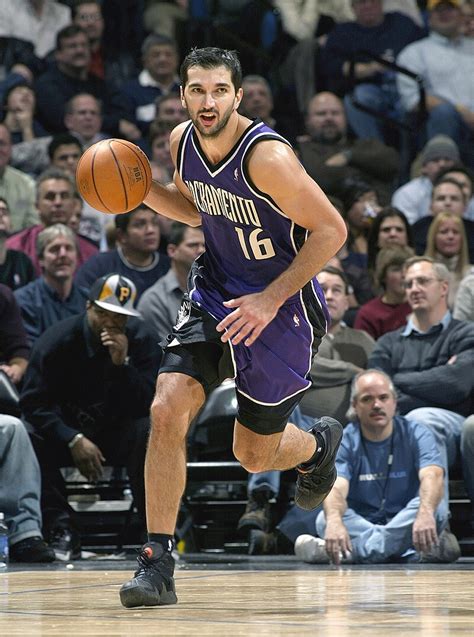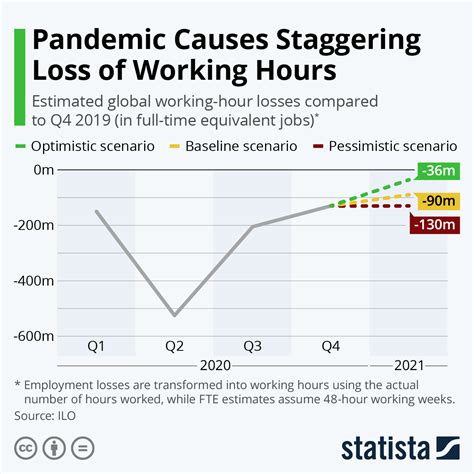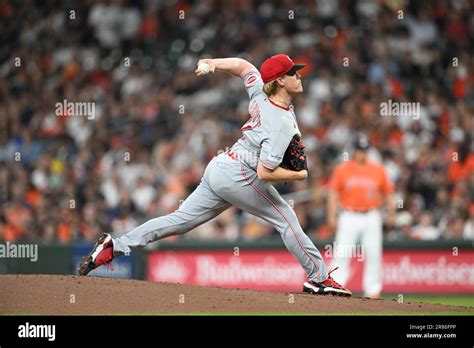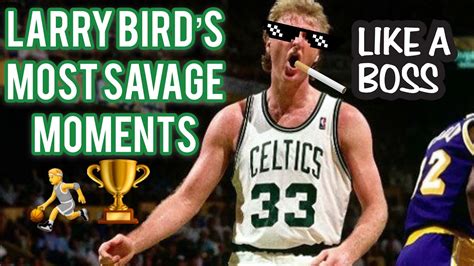
Peja Stojakovic, the former NBA sharpshooter, has criticized the modern NBA’s emphasis on three-point shooting, claiming that too many players are now encouraged to shoot from beyond the arc, diluting the quality of the game.
Former Sacramento Kings star Peja Stojakovic has voiced concerns about the current state of the NBA, particularly the league’s embrace of three-point shooting and its impact on overall gameplay. In a recent interview, Stojakovic argued that the “green light era,” where players are heavily encouraged to shoot threes, has led to a decline in the quality of basketball.
“Too many players shooting!” Stojakovic declared, highlighting his belief that the over-reliance on three-pointers is detrimental to the game’s fundamentals and strategic diversity.
Stojakovic’s critique comes at a time when the NBA is experiencing an unprecedented surge in three-point attempts. Teams are increasingly structuring their offenses around spacing the floor and creating opportunities for open three-point shots. While this approach has led to higher scoring averages and exciting offensive displays, it has also sparked debates about the balance between perimeter and interior play.
Stojakovic, known for his own prolific three-point shooting during his 13-year NBA career, isn’t necessarily against the three-pointer itself. Instead, his concern lies with the perceived lack of selectivity and the emphasis on volume over efficiency. He suggests that players who may not possess the necessary skill or accuracy are being encouraged to launch shots from beyond the arc, potentially hindering the development of other aspects of their game.
“I think it’s great that the game evolves,” Stojakovic stated. “But I just think that right now, too many guys think they’re Steph Curry.”
This statement encapsulates Stojakovic’s main argument: the widespread adoption of three-point shooting has led to players emulating the game’s elite shooters without possessing the same level of skill or understanding of shot selection. He believes that this trend could be contributing to a decline in fundamental skills such as post play, mid-range shooting, and passing.
To fully understand Stojakovic’s perspective, it’s essential to consider his own career and the era in which he played. During his time with the Kings, Stojakovic was a key component of one of the most exciting and dynamic offenses in the NBA. Alongside players like Chris Webber, Mike Bibby, and Vlade Divac, Stojakovic helped revolutionize the game with his lethal outside shooting and ability to stretch the floor.
However, the Kings’ offense was characterized by more than just three-point shooting. It emphasized ball movement, player movement, and a balanced approach between inside and outside scoring. This contrasts sharply with the modern NBA, where some teams rely almost exclusively on three-pointers and layups, with limited emphasis on the mid-range game.
Stojakovic’s concerns are not unique. Other former players and analysts have also expressed reservations about the league’s embrace of three-point shooting. Some argue that it has made the game less physical and less aesthetically pleasing, while others contend that it has diminished the importance of traditional big men and post play.
However, proponents of the modern NBA argue that the increased emphasis on three-point shooting has made the game more exciting and efficient. They point to the higher scoring averages and the increased spacing on the floor, which allows for more driving lanes and opportunities for creative offensive plays. They also argue that the three-pointer has become an integral part of the game and that teams must adapt to survive.
The debate over the role of the three-pointer in the NBA is likely to continue for years to come. There is no easy answer, and different people will have different opinions. However, Stojakovic’s comments serve as a reminder that the game is constantly evolving and that it’s important to consider the potential consequences of any changes. His perspective, rooted in his experience as a successful player in a different era, provides valuable insight into the challenges and opportunities facing the NBA today. He calls for a more balanced approach, advocating for a return to fundamental skills and strategic diversity.
The Evolution of the NBA Offense: A Historical Perspective
To fully appreciate Stojakovic’s viewpoint, it is necessary to trace the evolution of offensive strategies in the NBA. In the early days of the league, the game was dominated by big men who operated primarily in the low post. Offenses revolved around feeding the ball to dominant centers and power forwards, who would score through a combination of size, strength, and skill.
As the game evolved, guard play became more prominent. Players like Bob Cousy and Oscar Robertson revolutionized the point guard position with their ball-handling skills, passing ability, and scoring prowess. This led to a more up-tempo style of play, with teams emphasizing fast breaks and quick transitions.
The introduction of the three-point line in 1979 initially had a limited impact on the game. Teams were hesitant to embrace the three-pointer, viewing it as a gimmick rather than a legitimate offensive weapon. However, as players became more skilled and accurate from beyond the arc, the three-pointer gradually became a more important part of the game.
In the 1990s, teams began to experiment with different offensive systems that emphasized spacing and ball movement. The Chicago Bulls, led by Michael Jordan and Scottie Pippen, popularized the “triangle offense,” which relied on constant motion, player movement, and precise passing. This system helped the Bulls win six NBA championships and established a new standard for offensive excellence.
The early 2000s saw the rise of the “seven seconds or less” offense of the Phoenix Suns, coached by Mike D’Antoni. This system emphasized speed, spacing, and quick decision-making. The Suns, led by Steve Nash and Amar’e Stoudemire, revolutionized the game with their up-tempo style and prolific three-point shooting.
The success of the Suns paved the way for the modern NBA, where three-point shooting has become an essential component of virtually every team’s offense. Teams are now prioritizing players who can shoot from beyond the arc, and offenses are structured around creating open three-point opportunities.
The Impact of Analytics on NBA Offense
The rise of three-point shooting in the NBA has been driven, in part, by the increasing influence of analytics. Teams are now using data to analyze every aspect of the game, including shot selection, player performance, and offensive efficiency.
Analytics have shown that three-point shots are generally more efficient than mid-range shots. This is because three-pointers are worth more points, and the increased spacing on the floor can lead to more driving lanes and opportunities for layups. As a result, teams are now encouraging their players to take more three-pointers and fewer mid-range shots.
However, some critics argue that the over-reliance on analytics has led to a homogenization of offensive styles. They contend that teams are now prioritizing efficiency over creativity and that the game has become less aesthetically pleasing as a result.
The Counterarguments to Stojakovic’s Claims
While Stojakovic’s concerns about the NBA’s emphasis on three-point shooting are valid, there are also counterarguments to consider. Proponents of the modern NBA argue that the increased emphasis on three-point shooting has made the game more exciting and efficient. They point to the higher scoring averages and the increased spacing on the floor, which allows for more driving lanes and opportunities for creative offensive plays.
They also argue that the three-pointer has become an integral part of the game and that teams must adapt to survive. Teams that fail to embrace three-point shooting are likely to fall behind and struggle to compete.
Furthermore, some argue that the criticism of the modern NBA is rooted in nostalgia and a longing for a bygone era. They contend that the game is constantly evolving and that it’s important to embrace new styles and strategies.
The Future of NBA Offense
It remains to be seen how the NBA offense will continue to evolve in the future. However, it’s likely that three-point shooting will remain an important part of the game for years to come.
As teams continue to refine their offensive strategies and develop new ways to utilize the three-pointer, it’s possible that we will see even more innovative and exciting offenses in the future. However, it’s also important to maintain a balance between perimeter and interior play and to ensure that the game remains aesthetically pleasing and enjoyable to watch.
Stojakovic’s critique serves as a valuable reminder of the importance of preserving fundamental skills and strategic diversity in the NBA. His perspective, rooted in his experience as a successful player in a different era, provides valuable insight into the challenges and opportunities facing the league today. Whether the league will heed his warning remains to be seen, but his voice adds an important dimension to the ongoing conversation about the future of basketball.
The Role of Coaching in the Modern NBA
Coaching plays a critical role in shaping the offensive strategies of NBA teams. Coaches are responsible for developing game plans, teaching players fundamental skills, and making in-game adjustments.
In the modern NBA, coaches must be adept at utilizing analytics to optimize their team’s offense. They must also be able to adapt to the strengths and weaknesses of their players and create systems that maximize their potential.
Some of the most successful coaches in the NBA have been able to strike a balance between embracing three-point shooting and maintaining a focus on fundamental skills. These coaches understand that the three-pointer is a valuable offensive weapon, but they also recognize the importance of interior play, ball movement, and defensive intensity.
The Player’s Perspective
While coaches and analysts often dominate the conversation about offensive strategies, it’s important to consider the perspective of the players. Players are the ones who ultimately execute the game plan and make decisions on the court.
Players must be able to adapt to different offensive systems and play styles. They must also be able to make quick decisions under pressure and execute fundamental skills with precision.
In the modern NBA, players are increasingly expected to be versatile and capable of playing multiple positions. They must be able to shoot from beyond the arc, drive to the basket, and defend multiple positions.
The Impact on Player Development
The emphasis on three-point shooting in the NBA has had a significant impact on player development. Young players are now being encouraged to focus on developing their three-point shooting skills at an early age.
While this can be beneficial in terms of preparing players for the modern NBA, it’s also important to ensure that they are developing a well-rounded skillset. Players who focus solely on three-point shooting may neglect other important aspects of their game, such as ball-handling, passing, and defense.
Coaches and trainers must strike a balance between developing players’ three-point shooting skills and ensuring that they are developing a comprehensive skillset.
Conclusion: Finding the Right Balance
The debate over the role of the three-pointer in the NBA is complex and multifaceted. There is no easy answer, and different people will have different opinions.
However, it’s clear that the game has evolved significantly in recent years, and that three-point shooting has become an integral part of the modern NBA. While it’s important to embrace new strategies and technologies, it’s also crucial to maintain a focus on fundamental skills and strategic diversity.
The challenge for the NBA is to find the right balance between three-point shooting and other aspects of the game. By doing so, the league can ensure that the game remains exciting, competitive, and aesthetically pleasing for years to come. Stojakovic’s words serve as a pertinent reminder to avoid over-emphasizing one aspect of the game at the expense of others, and to always value a balanced and fundamentally sound approach to basketball.
The league needs to consider ways to encourage a more balanced approach to the game. This could involve rule changes, such as limiting the number of three-point attempts a team can take in a game. It could also involve a greater emphasis on coaching and player development, with coaches and trainers focusing on teaching players fundamental skills and promoting a more balanced approach to the game.
Ultimately, the future of the NBA offense will depend on the decisions made by coaches, players, and league officials. By working together, they can ensure that the game remains exciting, competitive, and aesthetically pleasing for generations to come. Stojakovic’s voice serves as a valuable contribution to this ongoing dialogue. His legacy as a great shooter and insightful observer of the game makes his perspective all the more relevant. Frequently Asked Questions (FAQs)
1. What is Peja Stojakovic’s main criticism of the current NBA?
Peja Stojakovic’s primary concern is that the NBA overly emphasizes three-point shooting, leading to too many players attempting shots from beyond the arc, even if they lack the necessary skill or strategic understanding, diluting the overall quality of the game and potentially hindering the development of other essential basketball skills.
2. Why does Stojakovic believe the focus on three-pointers is a problem?
Stojakovic suggests that the current “green light era” encourages players to emulate elite shooters like Steph Curry without possessing the same level of skill, leading to poor shot selection and a decline in fundamental skills such as post play, mid-range shooting, and passing. He worries about the balance of the game shifting too far towards perimeter shooting.
3. How did Peja Stojakovic’s own career influence his perspective on the NBA’s current state?
During his time with the Sacramento Kings, Stojakovic was part of a dynamic offense that emphasized ball movement, player movement, and a balanced approach between inside and outside scoring. This contrasts with the modern NBA, where some teams heavily rely on three-pointers, and Stojakovic believes that his experience in a more balanced system allows him to see the potential downsides of the current trend.
4. Are other former players and analysts expressing similar concerns as Stojakovic?
Yes, other former players and analysts have also voiced concerns about the league’s embrace of three-point shooting. Some argue that it has made the game less physical and less aesthetically pleasing, while others contend that it has diminished the importance of traditional big men and post play.
5. What are some potential solutions to address the concerns about the over-reliance on three-point shooting in the NBA?
Potential solutions include rule changes to limit three-point attempts, a greater emphasis on coaching and player development to promote a more balanced approach to the game, and a focus on encouraging players to develop a comprehensive skillset beyond just three-point shooting. The goal is to restore a balance between perimeter and interior play, ensuring the game remains exciting, competitive, and aesthetically pleasing.









